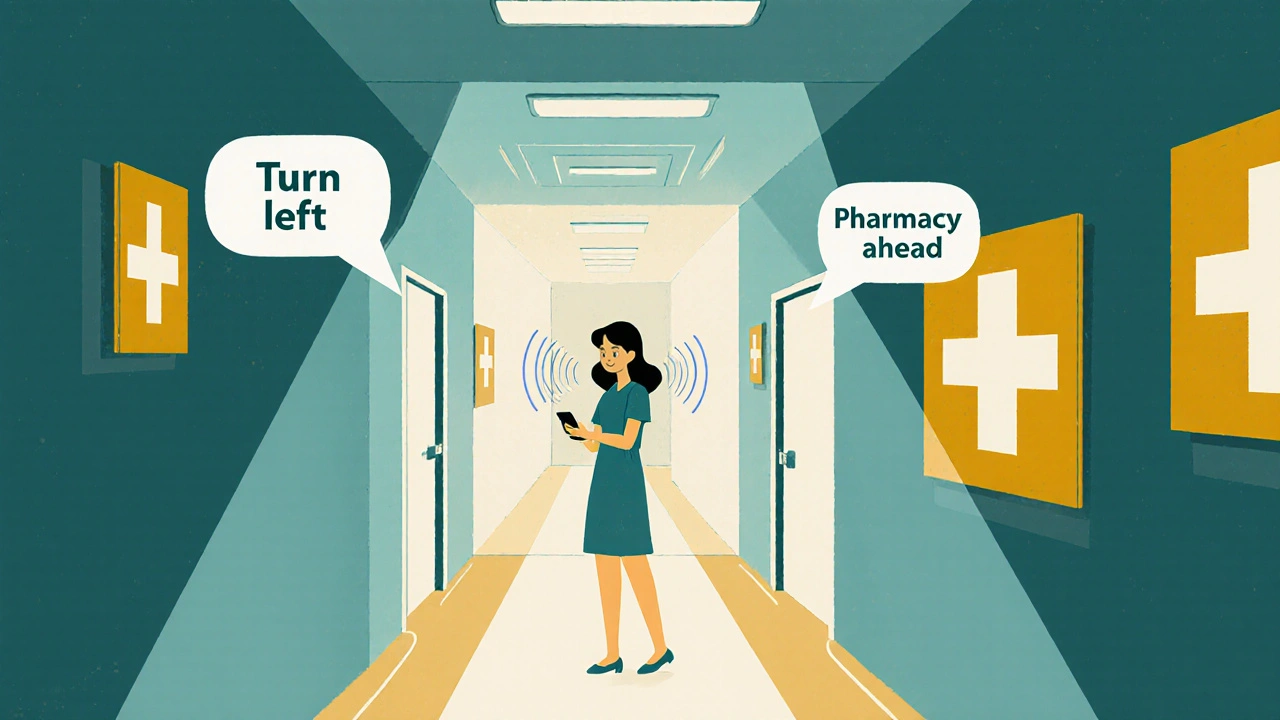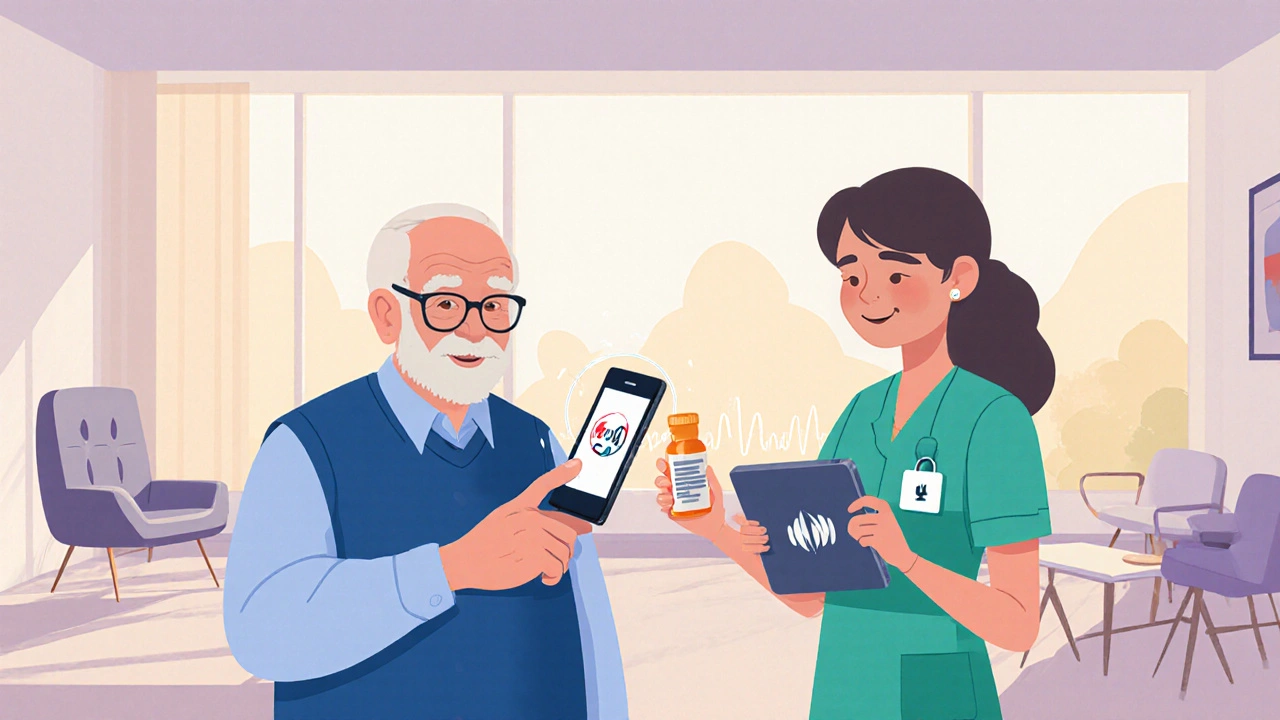Imagine needing to understand your diabetes medication schedule, but all the instructions are printed on paper. Or walking into a hospital for the first time, with no way to know which hallway leads to your appointment. For the 7.6 million Americans with vision loss that affects daily life, these aren’t hypothetical problems-they’re daily barriers. Yet, many healthcare systems still treat audio resources as an afterthought, not a necessity.
Why Audio Matters More Than You Think
Health information isn’t just about facts-it’s about safety. A 2024 study in JAMA Internal Medicine found that visually impaired patients had 2.3 times more medication errors than sighted patients when audio alternatives weren’t available. That’s not a small gap. That’s life or death. Audio resources don’t just make information accessible-they prevent harm. The law backs this up. The Americans with Disabilities Act, Section 504 of the Rehabilitation Act, and the Affordable Care Act all require healthcare providers to offer auxiliary aids like audio recordings, screen readers, and real-time audio guidance. It’s not charity. It’s the law. And yet, a 2023 survey found that 63% of visually impaired patients faced inconsistent access to these tools across different clinics and hospitals.What Audio Resources Are Actually Available
There’s no single app or system that fixes everything. But there are powerful tools that, when used together, create real access. The National Library Service for the Blind and Physically Handicapped (NLS) offers over 120,000 audiobooks-many focused on medical conditions, treatments, and self-care. Through their BARD Mobile app, patients can download content like “Understanding Your Blood Pressure Medications” or “Managing Diabetes Through Diet.” It’s free for eligible users who complete a simple certification process through the Braille Institute. No credit card. No subscription. Just access. For reading printed materials, KNFBReader works like a magic pen. Point your phone at a pill bottle, a doctor’s note, or a consent form, and it reads it aloud in under three seconds with 98.7% accuracy. It costs $99, but many nonprofits and Medicaid programs help cover the cost for low-income users. If you need to navigate a hospital, RightHear’s Talking Signage uses Bluetooth beacons to guide you. Walk into a clinic, and your phone whispers, “Turn left at the elevators, pharmacy is 40 feet ahead.” Hospitals like Johns Hopkins have cut navigation requests by 47% since installing it. No internet needed. Works even in basements. For everyday use, Voice Dream Reader turns any digital document-PDFs, emails, web pages-into spoken words. It supports 100+ voices and 30+ languages. At $29.99, it’s cheaper than a monthly coffee habit. And unlike some hospital apps, it works with Apple’s VoiceOver and Android’s TalkBack, so it doesn’t break when you update your phone.What Hospitals Are Getting Wrong
Too many hospitals think they’re doing enough if they hand out a CD with a recording of the doctor’s instructions. That’s not accessibility. That’s a Band-Aid. Real accessibility means:- Audio versions of consent forms, discharge instructions, and lab results are available at the same time as printed ones.
- Staff know how to help patients access these tools-not just hand them a phone and say, “Here, use this app.”
- Audio content is updated regularly. Outdated recordings of medication dosages can be dangerous.

Real Stories, Real Impact
At St. Jude’s Children’s Research Hospital, they rolled out a custom audio system called VisionConnect™. One parent, whose child has retinal dystrophy, said: “Before, I’d miss appointments because I couldn’t find the right wing. Now, my phone tells me exactly where to go. My daughter’s test results are read to me the same day they’re ready. I don’t have to wait for someone to be free to help me.” Another case: a 72-year-old man with macular degeneration was told to take his insulin at 8 a.m. and 8 p.m. He got a printed sheet. He couldn’t read it. He guessed the times. He ended up in the ER with dangerously low blood sugar. The next week, the hospital gave him a KNFBReader. He now scans his insulin box every morning. No more ER visits.What You Can Do Right Now
If you’re a patient or caregiver:- Ask for audio versions of all health materials-before you leave the office.
- Download BARD Mobile or Voice Dream Reader. Both work on older phones.
- If a hospital refuses, ask to speak to their ADA coordinator. It’s their legal duty to help.
- Join patient advocacy groups. They push hospitals to improve.
- Don’t assume everyone can read. Always offer audio.
- Train your staff on how to use and explain these tools. A 15-minute demo can change lives.
- Start small. Pick one form-say, discharge instructions-and make it available in audio. Then expand.
- Partner with local organizations like the Braille Institute or Lighthouse Guild. They’ll help you set it up.

The Future Is Already Here
By December 2024, federal rules will require every electronic health record system to include audio output. That means your lab results, medication list, and doctor’s notes will be readable by voice-no extra app needed. The Mayo Clinic is testing AI that turns complex medical summaries into short, personalized audio clips. Imagine getting a 90-second voice message after your appointment: “Your blood sugar is high. Try walking 15 minutes after meals. Avoid sugary drinks. Your next test is in 3 weeks.” And starting in 2025, hospitals will be required to provide real-time audio translation for non-English speaking patients with vision loss. That’s huge. Because language barriers + vision loss = double isolation.It’s Not About Technology. It’s About Respect.
Audio resources aren’t fancy gadgets. They’re basic tools for dignity. They let people with vision loss be active participants in their own care-not passive recipients of information they can’t access. The technology exists. The law requires it. What’s missing is the will to use it consistently. Every time a hospital gives a patient a printed sheet instead of an audio file, they’re saying: “Your blindness is your problem, not ours.” It doesn’t have to be that way.Are audio health resources free?
Some are, some aren’t. The NLS BARD Mobile app and CRIS Radio are completely free for eligible users. Apps like Voice Dream Reader and KNFBReader cost money-$29.99 and $99 respectively-but many nonprofits, Medicaid programs, and hospitals help cover the cost. Always ask.
Can I use these tools if I’m not tech-savvy?
Yes. BARD Mobile and RightHear are designed to work with built-in phone features like VoiceOver and TalkBack. You don’t need to know how to code or navigate menus. Many older adults use them successfully. If you’re unsure, ask a family member, librarian, or local blindness organization for a quick walkthrough.
What if my doctor doesn’t know about these tools?
Politely ask to speak with the hospital’s ADA coordinator or accessibility officer. They’re required by law to know about and provide these resources. If they don’t, you can file a complaint with the U.S. Department of Health and Human Services. Your right to accessible information is protected under federal law.
Do these tools work with Medicare?
Since January 2023, Medicare covers audio description services for beneficiaries with certified vision loss. This includes audio versions of medical instructions and educational materials. Ask your provider if they offer Medicare-approved audio resources.
How do I get certified for free audio books from NLS?
Contact the Braille Institute or your state’s NLS affiliate. You’ll need a professional-like an ophthalmologist, optometrist, or certified low vision specialist-to verify your vision loss. The process takes 14 to 21 business days. Once approved, you can download thousands of medical audiobooks for free.
Can I use these tools for non-English speakers?
Yes. Voice Dream Reader supports 30+ languages. NLS offers audiobooks in Spanish, Mandarin, and other languages. Starting in 2025, hospitals will be required to provide real-time audio translation for non-English speaking patients with vision loss, so this will become standard.
Are there apps that help with navigating hospitals?
RightHear’s Talking Signage is the most widely used in hospitals. It works without Wi-Fi and gives turn-by-turn audio directions. Other apps like Seeing Eye GPS are great for outdoor navigation but aren’t designed for complex indoor environments like clinics. Ask your hospital if they use RightHear or a similar system.


Write a comment